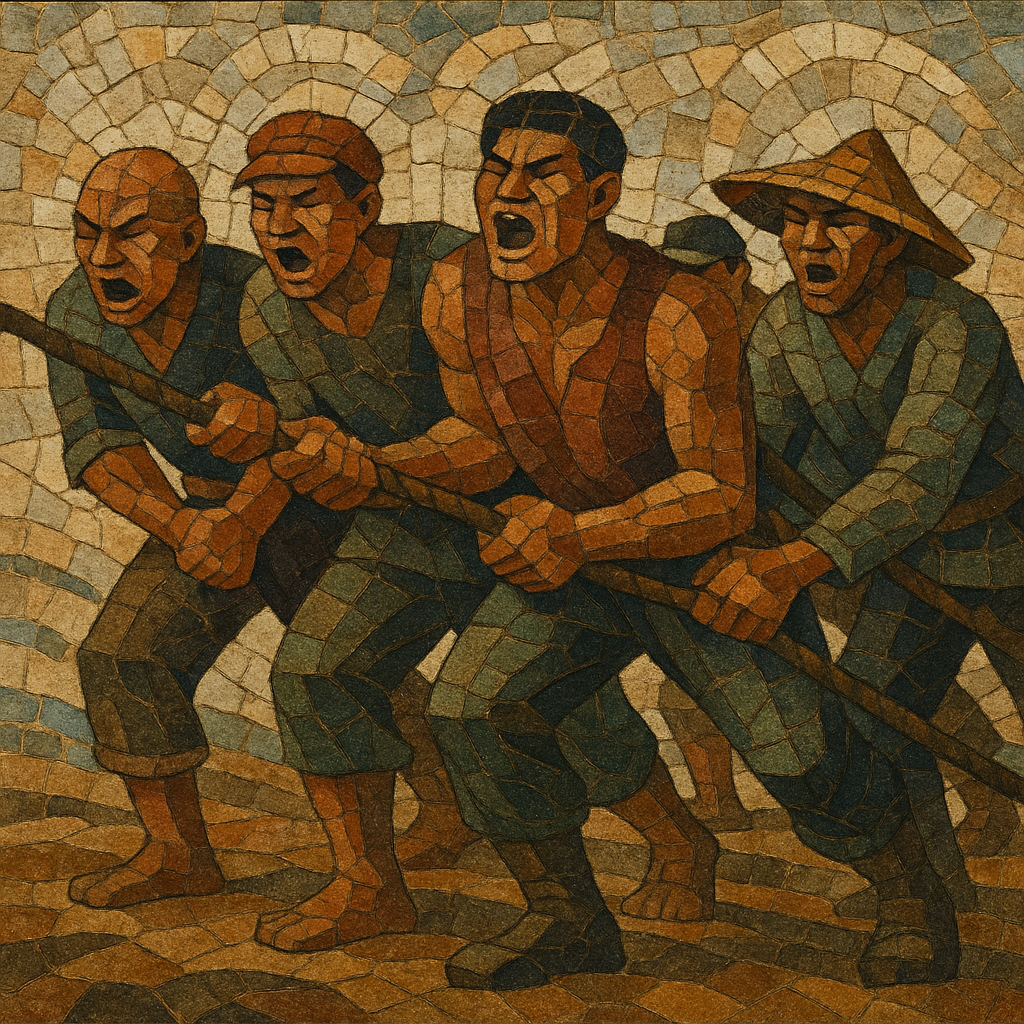Your digging level
Description
Haozi (号子) is a class of Chinese work songs traditionally sung by laborers—especially boatmen, porters, builders, miners, and field workers—to synchronize strenuous collective tasks. Its hallmark is a loud, commanding lead call answered by a forceful group response, aligning breaths, footsteps, pulls, or lifts so that a team moves as one.
Typically unaccompanied or accented by simple percussive cues (such as drum, gong, or the thud of tools), haozi favors robust projection, narrow-to-moderate melodic ranges, and pentatonic contours. The texts are vivid and direct, using shouted onomatopoeia, improvised lines, and earthy metaphors to motivate effort, relieve fatigue, and build solidarity.
Regional variants abound—most famously the Yangtze River boatmen’s chuantou haozi—yet all forms share a functional, antiphonal design and a performance style that is visceral, communal, and time-keeping at its core.
History
Haozi likely coalesced as a distinct work-song practice during the late imperial period, with strong documentation from the Qing dynasty in riverine transport hubs along the Yangtze. While labor singing in China is much older, the term and the characteristic call-and-response practice became especially associated with coordinated heavy work—hauling boats against currents, lifting stones, or carrying loads through city streets.
The music’s primary function was utilitarian: the lead singer (often a foreman-like figure) issued a shouted cue, and the crew’s response synchronized a burst of effort. This musical scaffolding reduced fatigue, increased safety, and fostered morale.
Different trades and locales cultivated distinct subtypes (e.g., boatmen’s haozi, dockworkers’ haozi, miners’ haozi). Melodies tend to be pentatonic with flexible rhythm, expanding or contracting to match the task cycle. Texts mix short vocables (hai-yo, hei-yo), improvised slogans, and narrative couplets about rivers, weather, bosses, and kin.
With mechanization and shifts in labor organization in the 20th century, the practical context for haozi diminished. However, the sound and spirit of haozi were preserved by folklorists and staged ensembles, and its antiphonal drive informed later mass songs and some contemporary re-imaginings of traditional Chinese style. Today, haozi is referenced in heritage performances, recordings, and educational settings as a window into the sonic life of pre-industrial labor.




